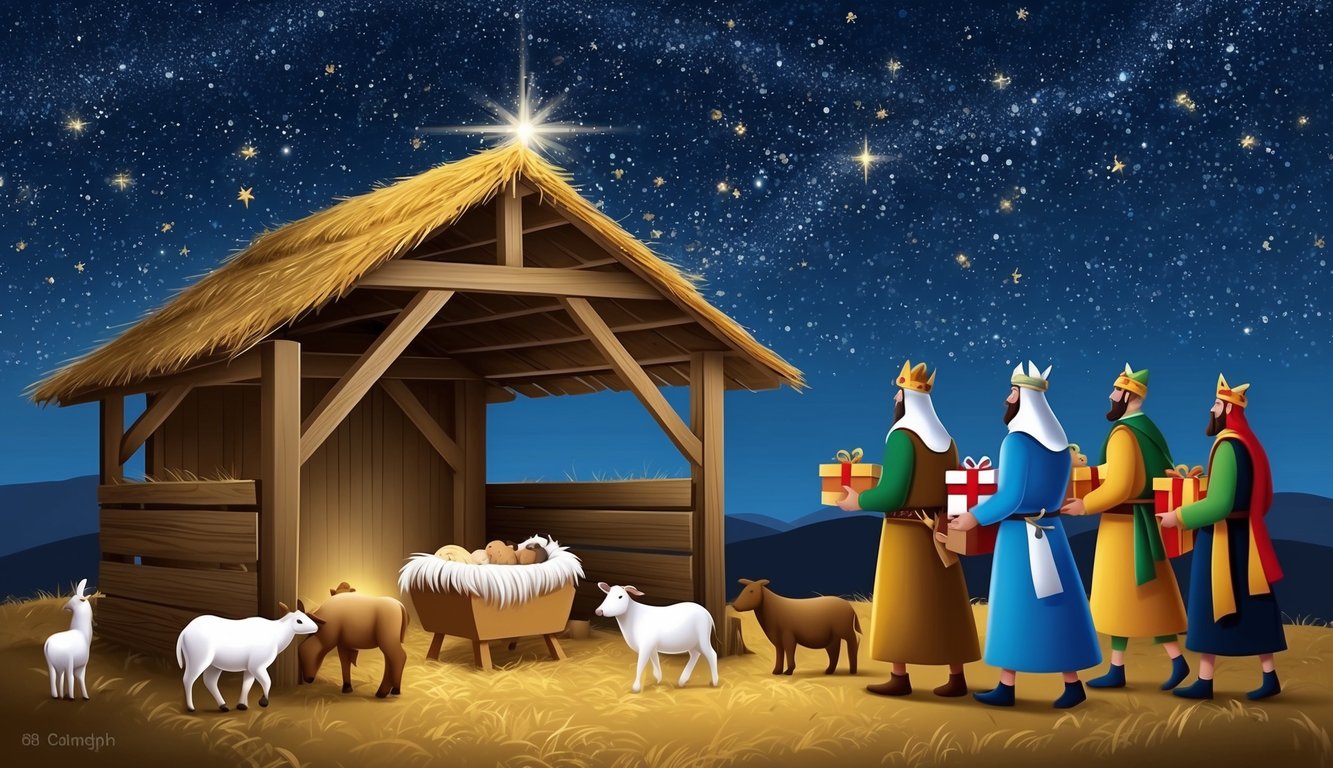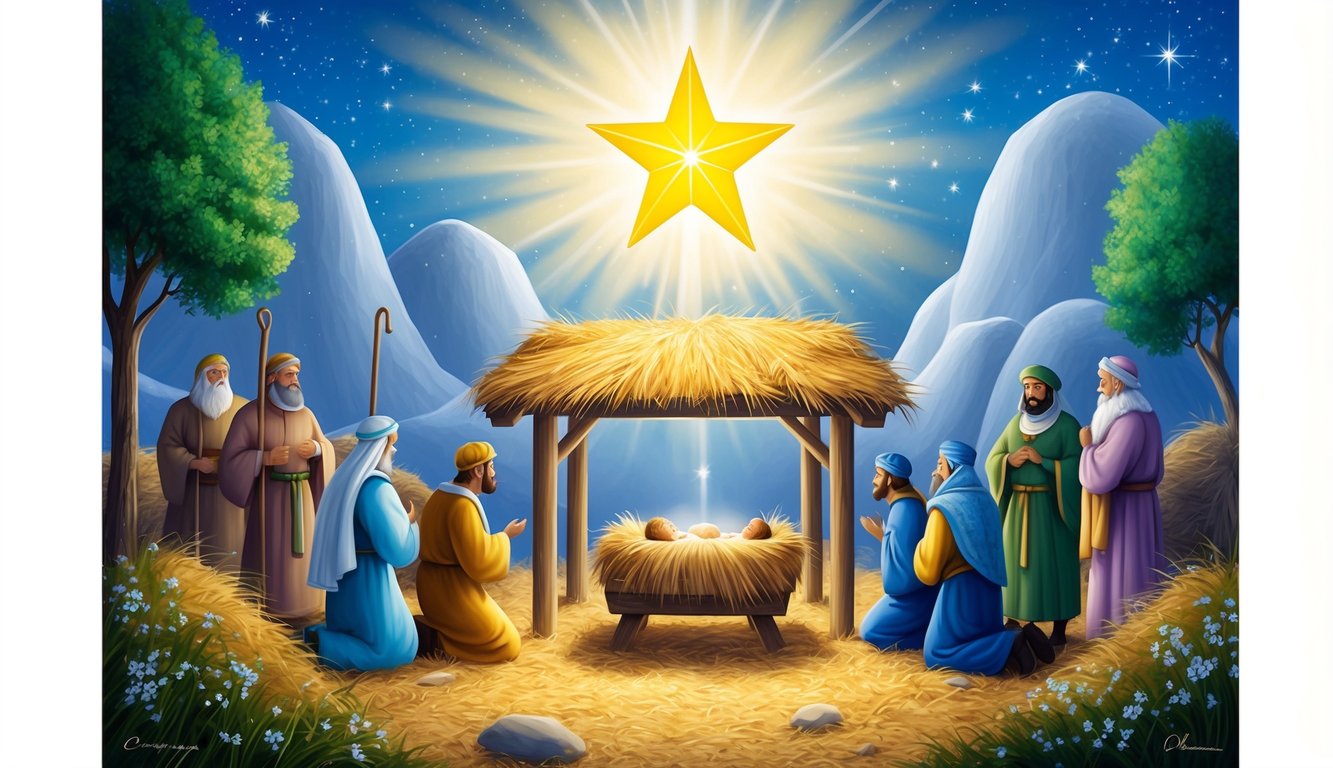Don’t Miss Out On This Unique Astrological Opportunity
Are you tired of spinning your wheels and getting nowhere? Simply put, you’re out of sync: you’re out of alignment with your astral configuration.
But: there’s a kind of map that can help you reclaim your alignment. Think of it as your own personal blueprint to success and happiness: a blueprint that will help you live your most amazing life.
Get started here.
Have you ever wondered what year Jesus was born? It’s a question that has puzzled scholars and historians for centuries. Many suggest Jesus was born between 6 and 4 BCE. This period aligns with the reign of King Herod, as mentioned in the New Testament.
You might be curious about the evidence behind this timeline.
Historical clues from the Gospels and other ancient texts provide insights that researchers use to estimate this timeframe.
Some scholars also try to link Jesus’s birth to astronomical events, but these remain largely speculative according to the findings.
Exploring the circumstances around the birth of Jesus not only enlightens you about historical Christianity but also enriches your appreciation for how these ancient narratives shape our world today.
As you delve into this fascinating topic, you discover how deeply intertwined stories from the New Testament are with history.
Dive deeper into this intriguing topic and uncover how these pieces of the past connect to the present.
Historical Context of Jesus’s Birth

During the time of Jesus’s birth, the Roman Empire had a strong influence over Judea, and King Herod ruled the region.
Understanding this context helps clarify the events surrounding Jesus’s birth, such as the census and the political and social dynamics.
Roman Rule and Governance
When Jesus was born, the Roman Empire governed a vast region, including Judea.
The emperor, Caesar Augustus, played a crucial role during this period.
He ordered a census, aiming to count and tax the population.
This census required people, like Joseph and Mary, to travel to their ancestral towns, bringing them to Bethlehem.
The region of Judea was under Roman control but maintained some local governance.
Romans appointed leaders to oversee the area, such as Quirinius, the governor of Syria.
This governance structure affected daily life for the Jews, shaped local laws, and influenced social structures.
Herod’s Reign and Judean Society
King Herod the Great reigned over Judea at the time of Jesus’s birth.
Known for his ambitious building projects and fortresses, Herod is also infamous for his volatile leadership and fear of being overthrown.
He ordered actions such as the Massacre of the Innocents, showing how unpredictable and dangerous his reign could be.
Life in Judean society was deeply influenced by Jewish traditions, even under Roman rule.
Jews were expected to follow religious laws and the ruling powers.
Social dynamics were complex, with Roman taxes, local customs, and Herod’s unpredictable policies impacting daily activities in places like Bethlehem.
The Nativity Accounts in the Gospels
The stories of Jesus’s birth in the Gospels are rich with details and messages.
Matthew and Luke share their unique perspectives, while introducing us to key figures like Joseph and Mary, and the Magi.
Symbols such as the Star of Bethlehem and angels add deeper meaning to these narratives.
Comparing Matthew and Luke’s Narratives
In the Gospel of Matthew, Joseph plays a prominent role.
Jesus’s birth is connected to prophecy, showing Jesus as the anticipated Messiah of Jewish tradition.
Matthew highlights the visit of the Magi and Herod’s role, focusing on how events fulfill Old Testament prophecies.
In the Gospel of Luke, the emphasis is on Mary’s experience.
Luke provides a detailed account of Jesus’s birth, including the angelic announcement to Mary and the humble setting of a manger.
Luke also features the census that brought Joseph and Mary to Bethlehem.
These narratives showcase different perspectives but together enrich the story of Jesus’s birth.
Notable Figures: Joseph, Mary, and the Magi
Joseph is depicted as a righteous man in the Gospel of Matthew, who obediently follows God’s guidance through dreams.
His role is crucial as the protector of the family.
Mary is portrayed with grace and faith, accepting her role as mother to the Son of God in both Gospels.
The Magi, or wise men, only appear in Matthew.
They follow the Star of Bethlehem to honor Jesus.
Their gifts of gold, frankincense, and myrrh symbolize Jesus’s kingship, divinity, and mortality.
These figures highlight different aspects of faith and recognition of Jesus’s significance from diverse perspectives.
Symbols and Omens: Star of Bethlehem and Angels
The Star of Bethlehem in Matthew is a key symbol leading the Magi to Jesus.
It represents divine guidance and the fulfillment of prophecy.
Many interpretations suggest it symbolizes hope and the manifestation of God’s promise.
In contrast, the Gospel of Luke includes angels who announce Jesus’s birth to shepherds in nearby fields.
This highlights themes of revelation and joy, emphasizing the message of peace and salvation for all people.
Angels serve as divine messengers, marking Jesus’s birth as a momentous event.
Speculations on the Actual Date of Birth
Many scholars have debated the birth year of Jesus, with suggestions ranging from 4 BC to 6 BC.
These discussions often involve the Julian Calendar, theological interpretations of seasonal importance, and evidence from both astronomical events and historical records.
Calculations and the Julian Calendar
When you explore the possible birth year of Jesus, the Julian Calendar plays a significant role.
Dionysius Exiguus, a 6th-century monk, initially developed the Anno Domini system to calculate Jesus’s birth year.
However, modern scholars often cite possible errors in Dionysius’s calculations, which might have placed Jesus’s birth around 4 BC to 6 BC.
These estimates rely on aligning Jesus’s birth with historical events like the census mentioned in the Bible.
Such calculations involve comparing historical records with the Julian Calendar, complicating precise dating.
Theological Significance and Seasons
Theologians often consider the timing of Jesus’s birth in relation to specific seasons.
Traditionally, many believe that Jesus was born in December, marking the celebration of Christmas.
Yet, some suggest a spring birth based on the biblical account of shepherds tending to their flocks, which implies milder weather typical in spring.
Winter has been symbolically significant for representing Jesus’s light coming into the world’s darkness.
Meanwhile, those leaning towards a spring birth point to themes of new life and growth aligning with Jesus’s arrival.
Astronomical and Historical Evidence
Astronomical and historical findings contribute additional angles to the debate.
Some researchers examine the appearance of celestial phenomena, like the Star of Bethlehem, and align them with possible years such as 4 BC to 6 BC to pinpoint Jesus’s birth year.
Historical evidence, including ancient texts and records, aids scholars in piecing together the timeline.
Researchers often cross-reference these findings to refine their hypotheses about the most likely date.
While definitive answers remain elusive, these efforts underscore the complex interplay between history, astronomy, and religious tradition.
The Birth of Jesus’s Impact on Christianity

The birth of Jesus has influenced important Christian traditions and celebrations.
Key events such as Christmas and Easter show how the life of Jesus and his teachings have shaped the Christian faith.
From Early Celebrations to Modern Christmas
Jesus’s birth is celebrated during Christmas.
This event marks the arrival of Christ, viewed as the Messiah foretold by prophets like David.
Over time, Christmas evolved beyond just a religious holiday.
It has become a global celebration focusing on joy, giving, and family.
Early Christians didn’t immediately celebrate Jesus’s birth.
Recognizing December 25th as his birthday only began in the 4th century.
This date might have been chosen to align with existing Roman festivals.
As the holiday grew, Christmas traditions spread worldwide.
Today, elements like nativity scenes and midnight services emphasize the religious significance.
Customs such as gift-giving and festive decorations have also become common.
These practices help people remember the humble beginnings of Jesus’s life on Earth.
Easter and the Recognition of Jesus’s Ministry
Easter is another vital celebration for Christians.
It honors the Resurrection of Jesus, highlighting his role as the Savior and his triumph over death.
This event ties directly to Jesus’s ministry and sacrifice, offering believers hope for salvation.
Easter follows the Jewish festival of Passover, connecting Jesus’s Resurrection to themes of deliverance and new life.
Jesus’s final days are marked by his entry into Jerusalem and the Last Supper.
These events are central to the Christian story.
The holiday is not limited to one day.
Easter includes Holy Week, which features Good Friday, recalling Jesus’s crucifixion.
Celebrations end with joyous church services and symbolic rituals.
These commemorate the renewal and faith attributed to Jesus’s ministry.
Cultural and Theological Reflections

Cultural and theological reflections on Jesus’s birth year highlight the importance of his teachings and the belief in him as the Messiah.
These reflections have shaped Christianity and its spread.
Jesus’s Teachings and their Legacy
Jesus’s ministry included teachings that emphasized love, forgiveness, and humility.
His parables were powerful stories that conveyed moral and spiritual lessons.
These teachings have been foundational to Christianity, inspiring followers worldwide.
His messages were not just focused on religious doctrines but also on ethical living.
The impact of Jesus’s teachings is evident today in practices and rituals of the Christian Church.
The emphasis on compassion and community remains central to Christian beliefs.
Resurrection narratives reinforce his teachings, making them central to followers’ faith journeys.
His emphasis on kindness and service is reflected in many biblical accounts, including the Matthew 9 healing miracles, which highlight his role as a compassionate healer.
These stories continue to inspire believers, reinforcing the importance of faith and mercy in daily life.
Through his actions and lessons, Jesus set a moral foundation that continues to guide ethical and spiritual discussions today.
Prophecies and Jesus as the Messiah
Prophecies in the Old Testament mentioned a coming Messiah who would lead and save the people.
Many early Christians viewed Jesus as the fulfillment of these prophecies.
They saw his birth, life, and resurrection as divine signs.
During his ministry, people often saw Jesus’s actions as fulfilling prophecies.
This connection helped establish his role as a prophet and theologically significant figure within Christianity.
Over time, Jesus’s identity as the Messiah became central to Christian teachings, separating it from Jewish beliefs.
This distinction paved the way for the development of a unique Christian identity.
The belief in Jesus as the Messiah continues to be celebrated in Church teachings and practices.



